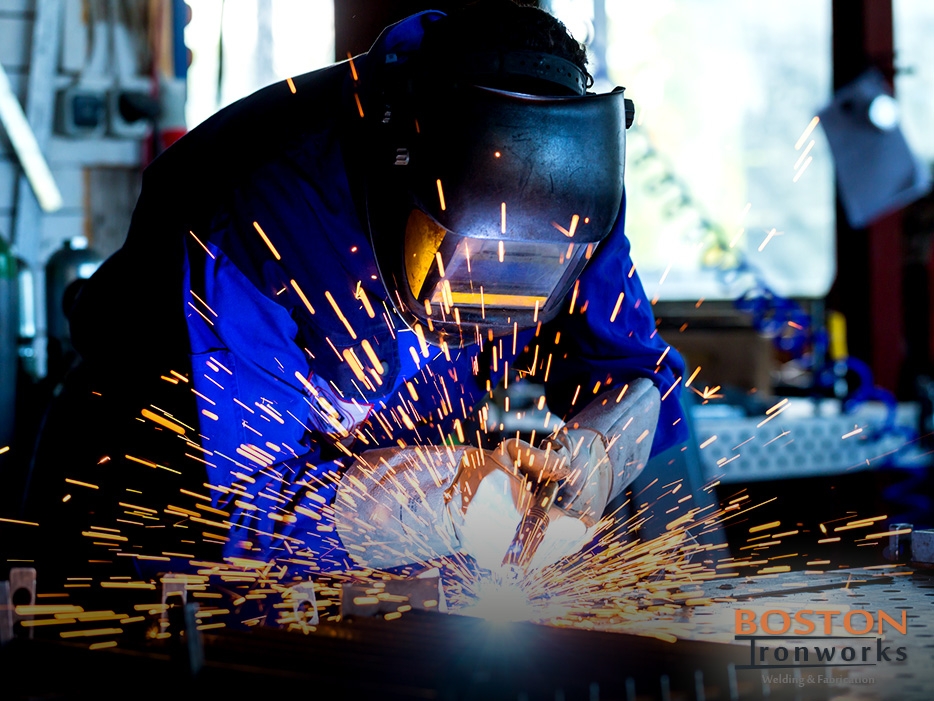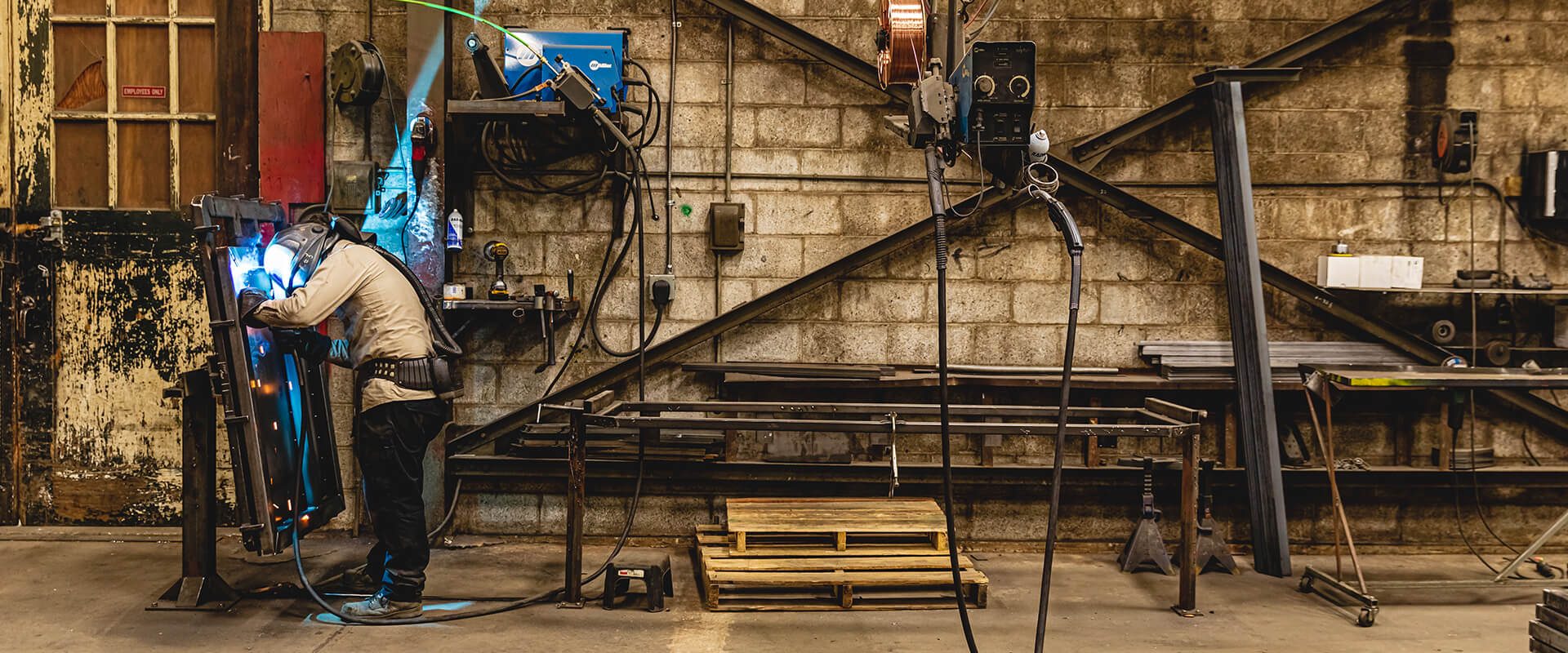Typical Welding Repair Service Issues and Exactly How to Address Them Effectively
Welding repair services frequently come across a range of issues that can endanger the stability of the end product. Typical issues consist of poor infiltration, porosity, and misalignment, among others. Each problem offers distinct difficulties that require certain methods for resolution. Comprehending these concerns is necessary for welders aiming to boost their skills and outcomes. This conversation will certainly check out these usual welding repair service concerns and efficient methods to resolve them.
Insufficient Penetration
Poor penetration happens when the weld steel stops working to totally fuse with the base material, resulting in weak joints and prospective structural failures. This problem usually comes from inadequate heat input, wrong electrode angle, or improper welding speed. Welders might experience insufficient penetration due to a mistake of the needed criteria for a details product thickness or kind. Furthermore, contamination on the base product's surface area can impede effective bonding, exacerbating the trouble. To address inadequate penetration, welders need to assure appropriate setups on their tools and maintain a clean work surface area. Normal examination of welds is recommended to recognize any deficiencies early, enabling timely adjustments and the avoidance of compromised structural honesty in welded assemblies.
Porosity
Porosity is a common problem in welded joints that shows up as little gas bubbles caught within the weld steel. This flaw can compromise the integrity of the weld, bring about minimized strength and potential failure under stress and anxiety. Belgrade Welding. Porosity usually emerges from contamination, dampness, or inappropriate welding techniques, which enable gases to run away into the molten weld pool. To address porosity, welders must guarantee appropriate surface area preparation, keep a clean workplace, and use suitable welding parameters. Additionally, picking the right filler material and protecting gas can minimize gas entrapment. Routine examination and testing of welds can assist recognize porosity early, ensuring timely restorative activities are taken, thereby preserving the quality and dependability of the welded structure
Imbalance
Misalignment in welding can arise from different factors, consisting of incorrect configuration and thermal development. Understanding the origin is necessary for efficient resolution. Numerous adjustment strategies are readily available to realign elements and guarantee structural stability.
Root causes of Imbalance
Welding imbalance often comes from a range of underlying issues that can jeopardize structural stability. One primary cause is incorrect fit-up of elements before welding, which can bring about gaps and irregular surface areas. Variants in thermal development during the welding process can additionally lead to distortion, particularly if the materials being signed up with have various coefficients of growth. In addition, insufficient clamping and fixturing might fail to hold parts safely in place, causing motion during welding. Badly conserved devices, consisting of welding equipments and tools, might introduce incongruities in the weld bead, more adding to imbalance. Finally, driver mistake, originating from inadequate training or experience, can additionally play a significant role in developing misaligned welds.
Improvement Techniques Available
Addressing imbalance effectively calls for a combination of restorative strategies tailored to the specific problems handy. One common method is making use of components or jigs to hold components in the appropriate placement throughout welding, guaranteeing regular placement. Additionally, preheating the materials can help lower distortion and enhance fit-up. For substantial misalignment, mechanical adjustment techniques, such as utilizing hydraulic jacks or clamps, can be utilized to remedy the setting before welding. Post-weld warmth treatment might additionally be essential to soothe stress and anxieties brought on by imbalance. Finally, careful inspection and modification during the setup phase can protect against imbalance issues from ending up being considerable troubles, promoting a smoother welding procedure and enhancing overall structural honesty.
Distortion
Distortion is a typical challenge in welding that can develop from various aspects, consisting of unequal cooling and heating. Recognizing the root causes of distortion is essential for executing efficient prevention techniques. Resolving this problem not only improves structural honesty but likewise enhances the total quality of the weld.
Reasons for Distortion
When based on the intense warm of welding, materials typically go through changes that can lead to distortion. This sensation mostly occurs from thermal development and contraction during the welding procedure. As the weld location warms up, the material expands; upon air conditioning, it gets, which can produce interior tensions. On top of that, uneven home heating across a workpiece can exacerbate these stress and anxieties, resulting in bending or bending. The type of product additionally plays a substantial function; metals with varying thermal conductivity and coefficients of growth may respond in different ways, leading to unpredictable distortions. Furthermore, bad joint design and insufficient fixturing can add to imbalance throughout welding, raising the possibility of distortion. Recognizing these reasons is vital for efficient welding repair work and prevention strategies.
Prevention Techniques
Efficient prevention strategies for distortion during welding concentrate on managing heat input and guaranteeing appropriate joint style. Preserving a regular warmth input assists to reduce thermal development and contraction, which can lead to distortion. Making use of strategies such as pre-heating the workpiece can additionally tombstone welder reduce the temperature slope, advertising consistent heating. In addition, selecting suitable joint styles, such as T-joints or lap joints, can improve stability and minimize stress and anxiety concentrations. Executing correct fixturing to safeguard the workpieces in place even more aids in keeping positioning throughout the welding procedure. Ultimately, staggered welding sequences can distribute warmth more evenly, avoiding local distortion. By applying these methods, welders can greatly decrease the likelihood of distortion and improve the general top quality of their welds.
Fracturing
Cracking is a typical issue come across in welding repair services, frequently resulting from different variables such as inappropriate cooling prices, material choice, or insufficient joint preparation. The incident of splits can significantly compromise the stability of the weld, causing possible failures during procedure. To address this problem, welders must initially analyze the origin, guaranteeing that products work and properly chosen for the particular application. Additionally, managing the air conditioning rate throughout the welding process is necessary; rapid cooling can cause tension and result in splitting. Correct joint design and preparation likewise add to reducing the risk. Carrying out these strategies can boost weld quality and sturdiness, inevitably lowering the chance of fracturing in completed weldments.

Insufficient Fusion
A significant issue in welding repair work is insufficient combination, which takes place when the weld metal does not appropriately bond with the base material or previous weld passes - Montana Mobile Welding and Repair Belgrade Fabrication. This defect can cause weaknesses in the joint, possibly compromising the stability of the welded framework. Elements adding to insufficient fusion consist of inadequate warmth input, improper welding technique, and contamination of the surfaces being joined. To resolve this issue successfully, welders need to assure correct pre-weld cleansing and surface area prep work, along with change their welding parameters to accomplish adequate infiltration and fusion. Regular evaluation during the welding process can likewise help determine insufficient blend early, permitting prompt corrective steps to boost the total top quality of the weld
Overheating
While welding fixings can enhance architectural stability, overheating provides a substantial challenge that can bring about material destruction. Too much warm during welding can modify the mechanical buildings of steels, leading to minimized stamina, raised brittleness, and warping. This phenomenon is particularly essential in high-stress applications where structural reliability Look At This is paramount. Identifying getting too hot can include aesthetic examinations for discoloration or distortion, as well as keeping track of temperature level throughout the welding procedure. To minimize the dangers connected with overheating, welders should use proper check these guys out methods, such as managing warm input, readjusting traveling rate, and using suitable filler materials. Furthermore, applying pre- and post-weld warm therapies can assist bring back material buildings and boost the general top quality of the repair, ensuring long-lasting performance and safety.
Regularly Asked Questions
What Are the Typical Signs of a Welding Issue?

How Can I Check My Welds for Quality?
To evaluate welds for quality, one can use visual examinations, ultrasonic screening, and radiographic approaches. Each technique ensures structural stability, identifies problems, and verifies adherence to specified standards, ultimately improving the integrity of the bonded joints.
What Safety and security Safety Measures Should I Take While Welding?
When welding, one ought to prioritize security by wearing suitable individual safety tools, making sure correct ventilation, securing combustible products away, maintaining a tidy office, and recognizing surroundings to avoid mishaps and injuries.
Can I Repair a Weld Without Redoing the Entire Joint?
Fixing a weld without renovating the entire joint is possible, relying on the damage (Montana Mobile Welding and Repair Fabrication). Techniques such as grinding, including filler material, or making use of a welding procedure can effectively resolve certain imperfections while preserving the bordering framework
What Devices Are Crucial for Reliable Welding Repair Works?
Essential tools for reliable welding repair services consist of a welding machine, wire brush, grinder, protective equipment, clamps, and filler products. Each device plays a crucial role in ensuring high quality and safety during the repair work procedure. Porosity generally occurs from contamination, moisture, or incorrect welding strategies, which allow gases to get away right into the molten weld swimming pool. Inadequately conserved equipment, including welding equipments and tools, may present inconsistencies in the weld bead, additional adding to misalignment. When subjected to the intense warmth of welding, products often go through adjustments that can lead to distortion. Splitting is a typical problem encountered in welding fixings, commonly resulting from numerous factors such as improper cooling rates, material selection, or inadequate joint preparation. A significant concern in welding fixings is insufficient blend, which takes place when the weld steel does not effectively bond with the base product or previous weld passes.
Comments on “Analyzing cracking in welds and how Montana Mobile Welding and Repair Belgrade Welding solves it”